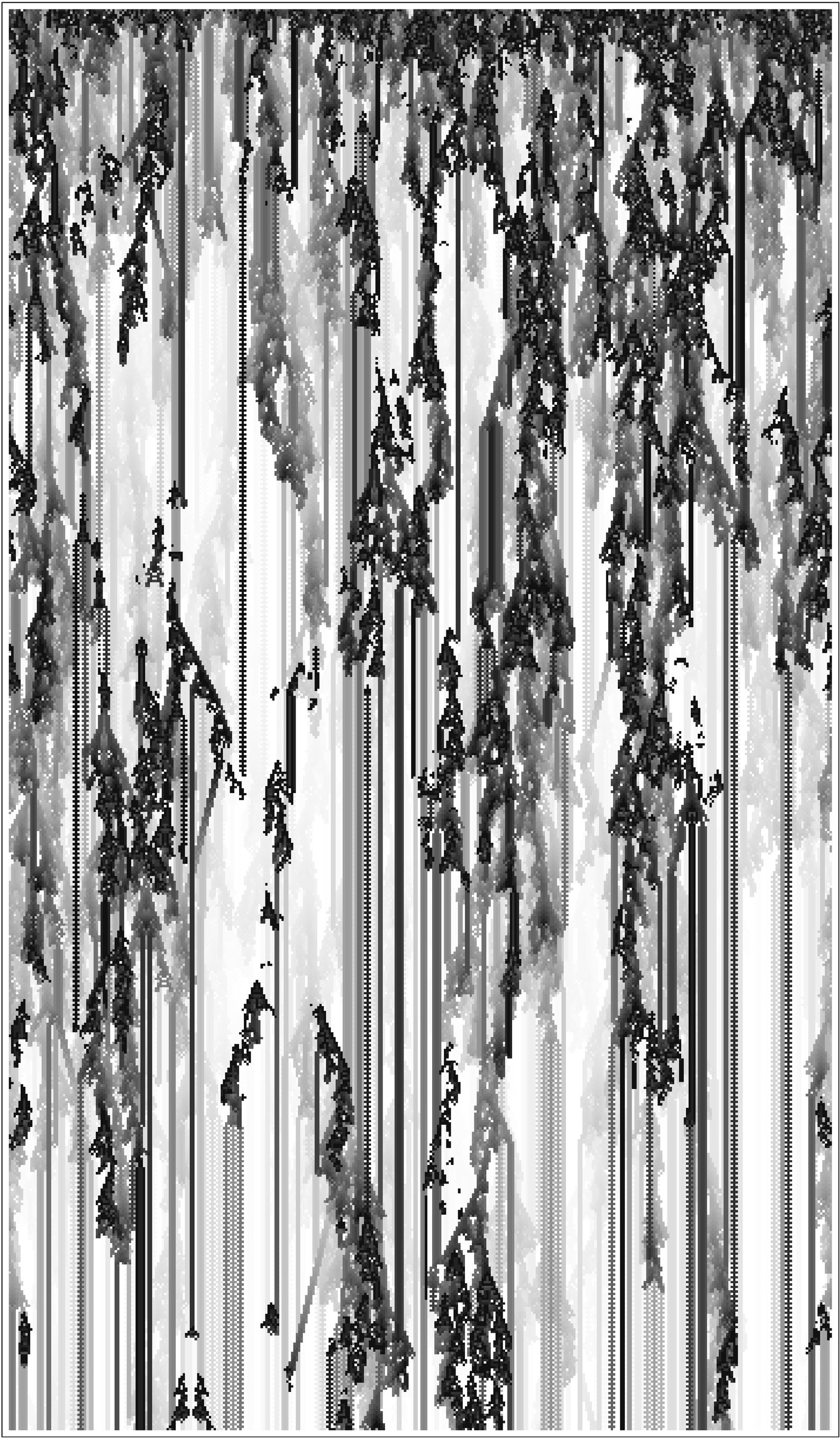 |  |
The behavior of a class 4 two-dimensional cellular automaton often known in recreational computing as the Game of Life. Localized structures that move (so-called gliders) show up as streaks in the pictures given here. The rule for this cellular automaton considers the 8 neighbors of a cell (including diagonals): if two of these neighbors are black, then the cell stays the same color as before; if three are black, then the cell becomes black; and if any other number of neighbors are black, then the cell becomes white. This rule is outer totalistic 9-neighbor code 224. The pictures on the right show cells that were black on preceding steps in progressively lighter shades of gray.



